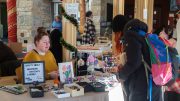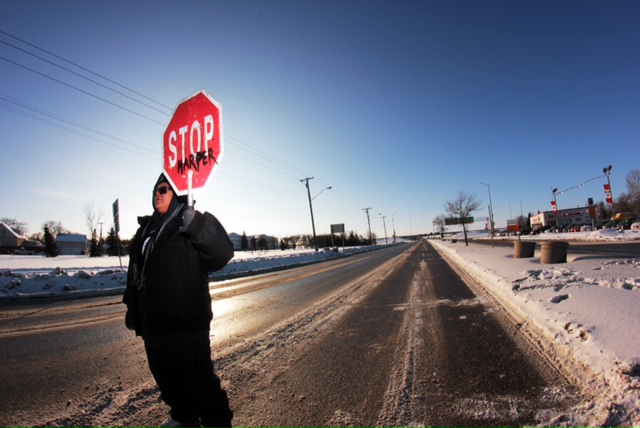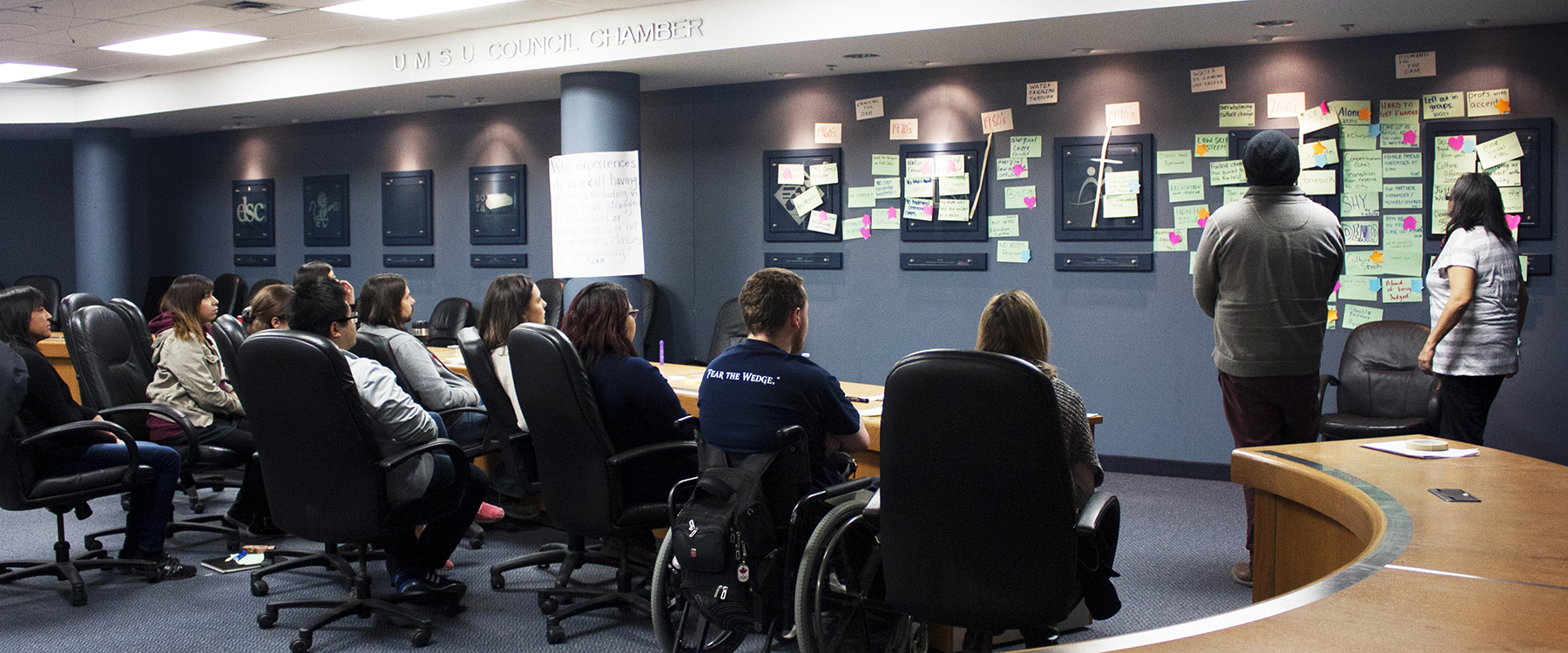Throughout equity month UMSU is holding a series of events for those wanting to learn more about human rights and one event on campus, Students in Spirit, drew attention to equity issues surrounding missing aboriginal women.
Equity Watch is made up of U of M students dedicated to the promotion of human rights.
Their mission statement is: “Working toward a campus that is fully equitable, inclusive, fair, impartial, and that truly respects human dignity across all spheres of our community.”
Jennifer Black, coordinator of the U of M Womyn’s centre and one of the organizers for equity watch, said she thinks the initiative is positive because it creates a discourse on equity issues.
Black explained that throughout the equity watch events there are a lot of critical discussions but also fun and interactive events.
Students in Spirit was held on March 8, International Women’s Day.
The purpose of the event was to raise awareness of the societal indifference towards over 600 missing and murdered indigenous women.
“I think this event is very important because it helps raise awareness about women, especially with this event because there is a lack of involvement with finding [missing aboriginal] women,” Jasmine Arcand, a student in the department of women and gender studies, said.
Beverley Jacobs, spokeswoman for the women and families, collaborated with artist Jaime Black and producer Tina Keeper to create the REDress REdress project.
The project launches Keeper’s documentary dedicated to these indigenous women, which features Jaime Black’s art installation — both are called the REDress REdress Project.
The artist Jaime Black is known for her red dress art installation: she has hung red dresses for missing Aboriginal women’s spirits at the University of Winnipeg, University of Manitoba and the Ottawa legislature.
“The symbolism of the dresses is really profound,” she said.
In the documentary screened at the event, Jaime Black explained people are respectful of the dresses and no one tries to deface or remove them.
She said the dresses tell the stories of women and families who are unable to have a voice.
Beverley Jacobs is an activist working on her doctorate in law, Indigenous research methodologies and Aboriginal health at the University of Calgary. She fights for missing aboriginal women’s voices to be heard in the Canadian government.
Jacobs said this feat has been analogous to banging her head against a cement wall.
Jacobs said there is a history of police inaction and this forces the families themselves to create search parties and search for their own children.
“I think there’s systemic problems. There’s a whole issue of racism that nobody wants to talk about . . . the policing is involved in that systemic problem and taking some responsibilities. I think it’s still a very patriarchal system,” Jacobs said.
Jacobs said she thinks society and people in society have to be the ones to demand change.
“It has an impact on every single person in society, so to me, people need to start taking responsibility,” Jacobs said.
Jacobs said their next step is to turn the negative into a positive, a part of the Law of Peace which is an inherent part of aboriginal culture.
Some important measures aimed toward this next step in the healing process, influencing the government, and preventing these problems in the future will be teaching history, risk factors and how future women can protect themselves.
With files from Joanna Graham




